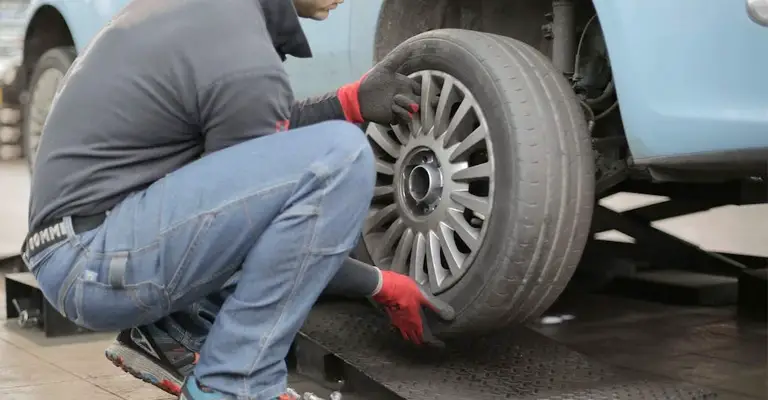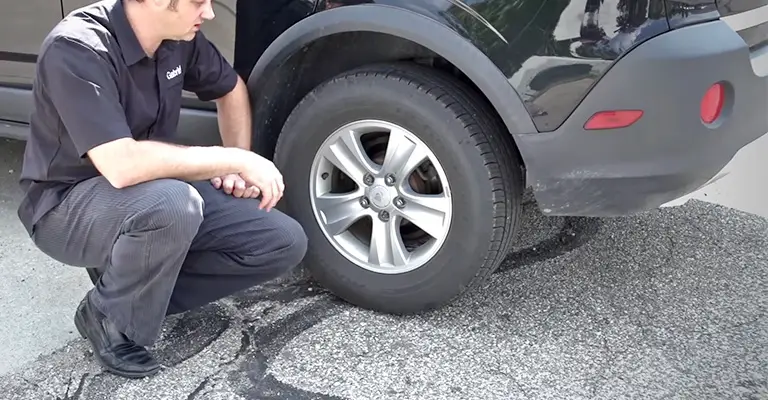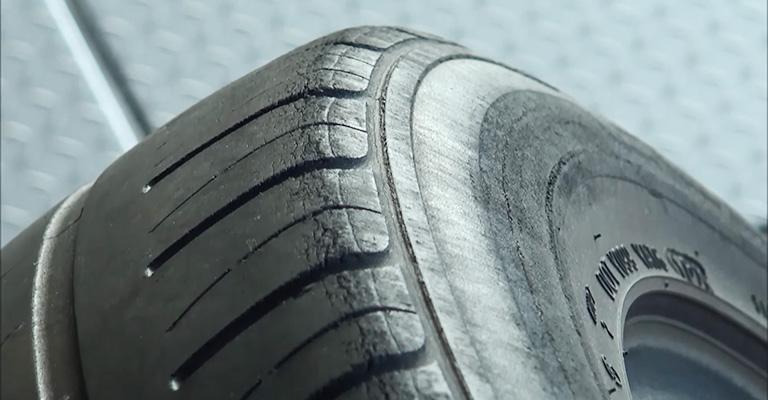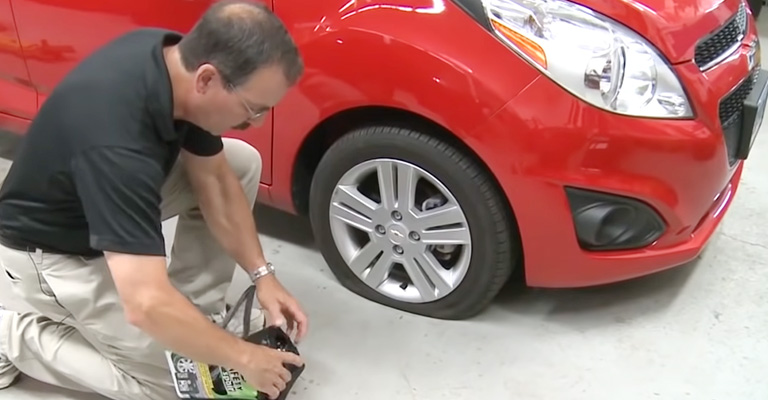While inflation is necessary for making car rides smooth, you should be careful of overinflating your tires. Thus, what can you do to avoid overinflating your tires? And what can be done to fix overinflation?
Overinflation is indeed a dangerous problem. However, if you know the symptoms and causes, it is easy to keep your tires safe from overinflating. Even if they are overinflated, you can easily solve the problem yourself.
So, keep on reading to learn more about overinflated tire symptoms, causes, consequences, and many more.

Overinflated Tires Symptoms
Many changes in the performance of your tires indicate overinflation. The most noticeable ones are –
Traction Reduction
One of the most common symptoms of overinflated tires is a massive reduction of traction of tires. As the tires are inflated too much, the center part becomes swelled, causing other parts of the tire to lose contact with the surface.
Thus, friction reduces between the tires and the road, making it hard for you to control the car.
Bouncy Tires

Another symptom of overinflation is that the tires become very bouncy and may result in an uncomfortable ride. This will become noticeable to you when the tires come into contact with bumpy roads or potholes.
Whenever tires are overinflated, the car behaves unnaturally, which can be easily noticed if you are used to driving your car regularly.
Overinflated Tires Consequences
You have to be aware of the dangers of overinflated tires to avoid life-threatening accidents.
Becomes Harder to Control the Vehicle
Reduced traction in tires caused by overinflation can be life-threatening, especially on rainy or winter days.
As the roads stay wet, it becomes a lot harder than usual to control the car. And having overinflated tires only adds to the risk and might cause severe accidents.
Damage to Tires

Aside from the risk of blowouts, constantly driving with overinflated tires causes permanent damage to them. While normal tires are more flexible, overinflation causes them to lose this trait and are more prone to common damages from potholes, damps, etc.
The center Part of the Tire Gets Worn
As the central part of the tire is bulged due to overinflation, it causes uneven wear on the tires. In this case, you will notice that the center part of the tire is more worn out than other parts. This massively reduces the lifespan of your tires.
Blowouts the Tire
Another horrible consequence is that overinflation might cause tire blowouts which means you can do nothing but replace the tires with new ones. This is a big loss financially because tires are quite expensive.
Overinflated Tires Fixes

Fixing overinflated tires is actually easier than finding out about the symptoms of overinflation. Here are a few steps you can follow to return your tires to their original state –
Let the Tires Cool Down
The first thing you have to do is make sure whether the tires are hot or cold. Hot tires sometimes show incorrect readings of tire pressure and might cause blowouts because of heat and air pressure.
Thus, you would want to wait for a few hours for the tires to cool down after use for accurate measuring of tire pressure.
Measure the Tire Pressure
After measuring tire pressure, if PSI (pounds per square inch) is above the recommended value, you will need to let some air off the tires.
Access to the Valve Steam
For this, first, you have to find out where the valve steam on your tire is. Gently twist off the metal cap, and a metal pin will be exposed.
Let Some Air out

Now you can let the air out of the tires two ways— with a tool or without a tool.
For the first method, you can take a screwdriver and press it down on the metal pin.
Or, if you have a tire deflator, you can simply attach it to the valve, and it will do its work.
Make Sure PSI Reaches the Recommended Value
The next step is the most important. You will need to constantly keep an eye on the PSI value until it reaches the recommended stage. And you surely don’t want to end up with an underinflated tire.
Put the Metal Pin in Its Place
Finally, don’t forget to close off the metal pin with the cap.
If you feel like you can’t do it, you can always go to a professional for guaranteed success and safety.
Conclusion
Many people treat overinflation with neglect and often end up with terrible accidents. Whereas, if you are aware of overinflated tire symptoms, causes, consequences, and more beforehand, you can easily avoid accidents and fix overinflation by yourself.
So, always remember to check the air pressure of your tires after inflating and before heading out on a ride, and read this article for detailed information on the problem.
Leave a Reply